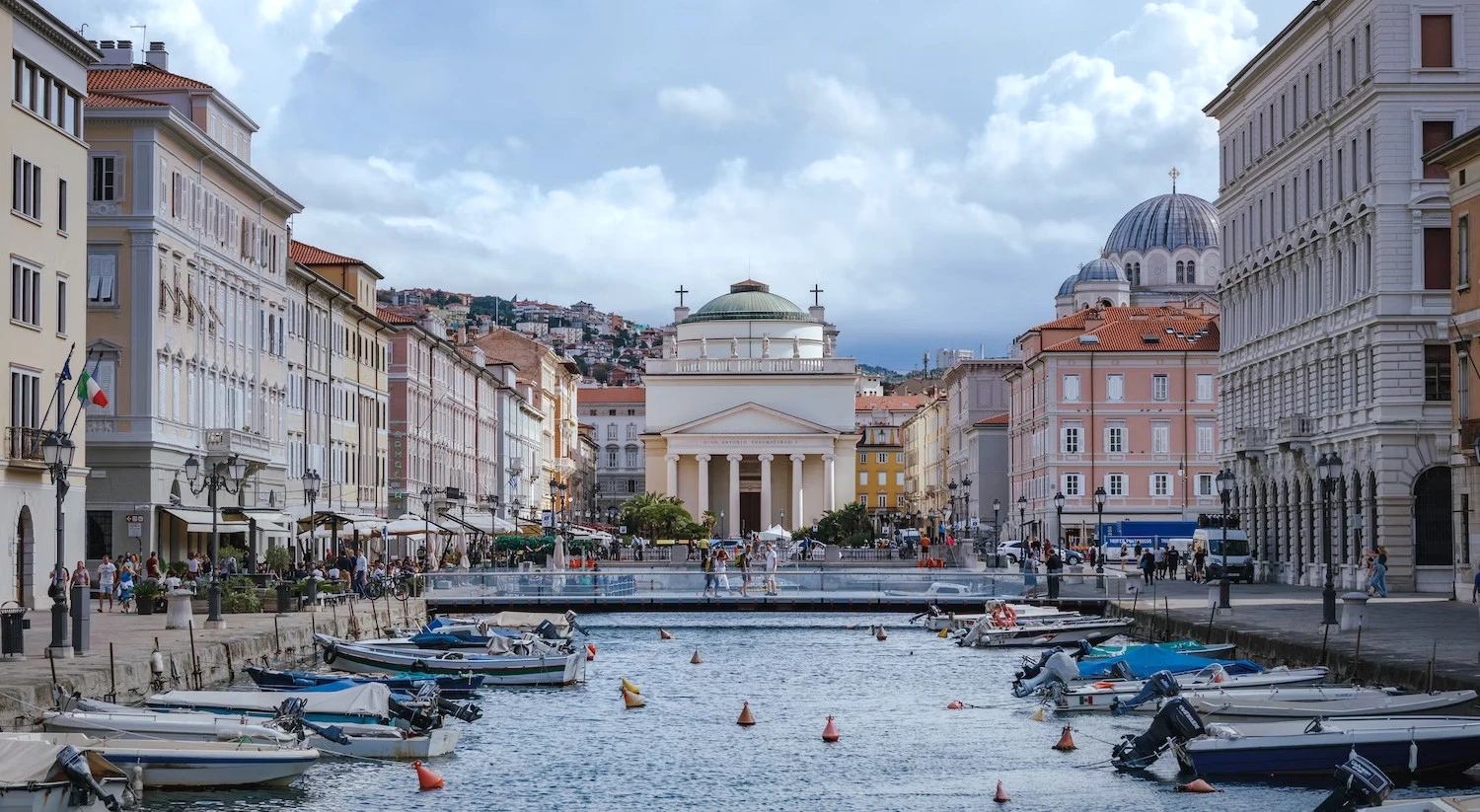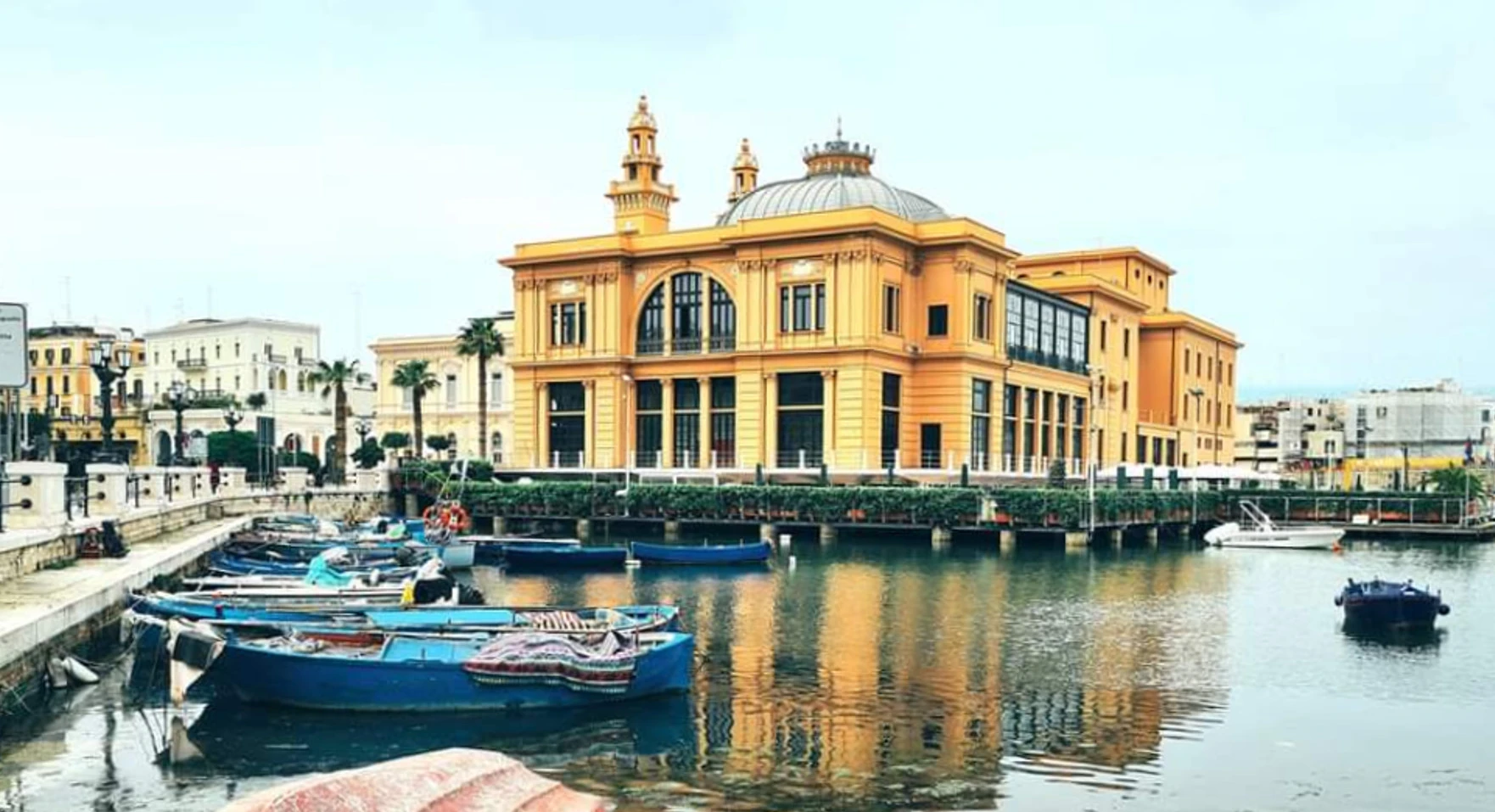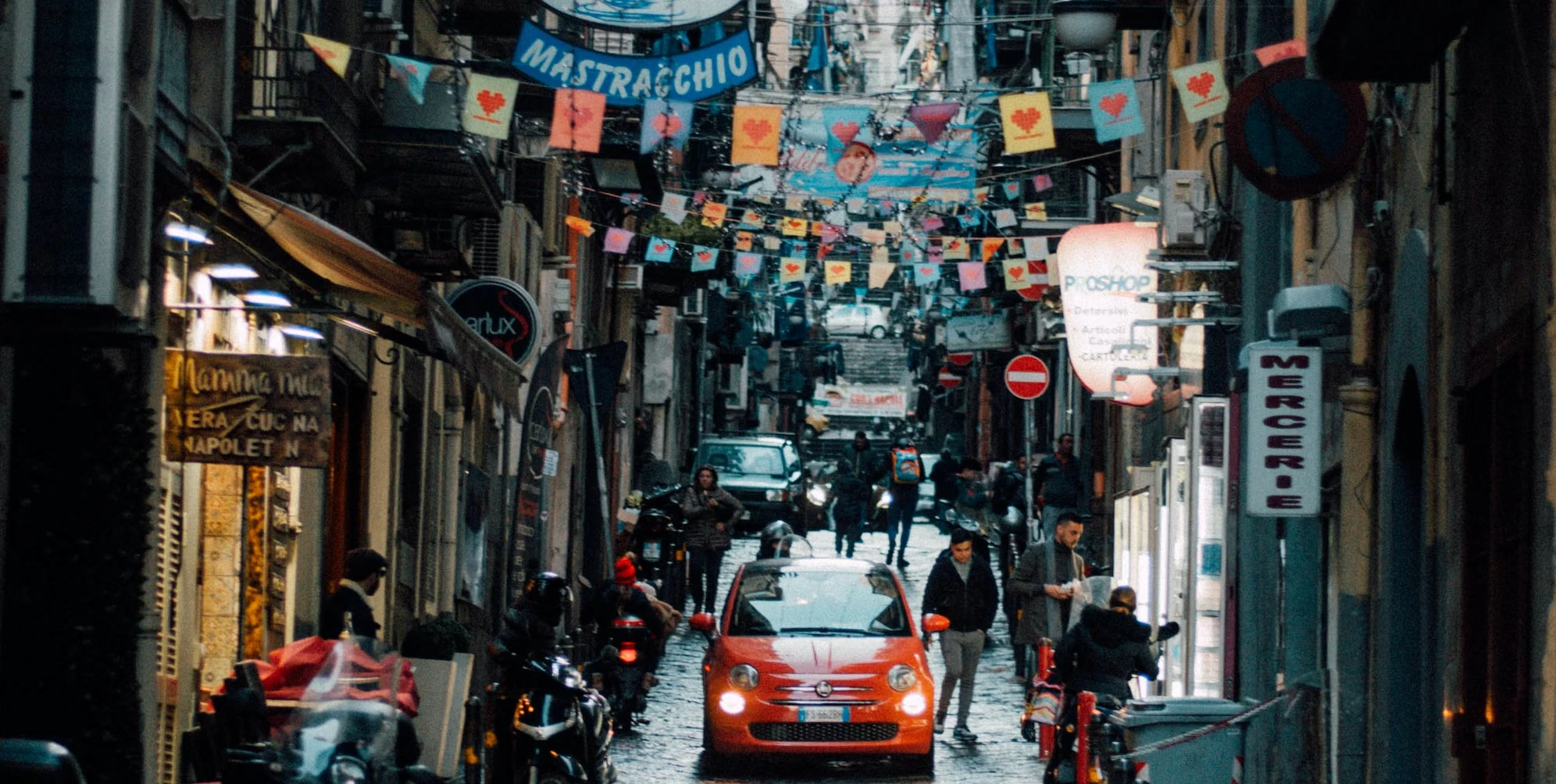Living in Trieste
Trieste is a city and seaport in northeastern Italy, situated on the Gulf of Trieste at the border with Slovenia.It has a long and complex history, having been influenced by various cultures and powers, such as the Romans, the Venetians, the Habsburgs, the French, and the Yugoslavs.
Living in Trieste as an expat can be both fascinating and challenging.
You can enjoy the benefits of living in a city that offers a unique blend of Italian, Central European, and Slavic traditions, but you also have to deal with the political and social issues that arise from its multicultural identity.
Trieste is the capital and largest city of the autonomous region of Friuli Venezia Giulia, as well as of the regional decentralization entity of Trieste, with about 204,000 inhabitants.
It is also the core of the wider Trieste metropolitan area, which has about 418,000 people.
Trieste is a UNESCO City of Literature and a global scientific centre.
It is known for its literary and intellectual heritage, as well as for its research institutes and organisations, such as the International Centre for Theoretical Physics, the Synchrotron Elettra, and the Area Science Park.
It has a GDP of about €14 billion ($17 billion), making it one of the most dynamic and innovative cities in Italy and Europe.
Search for:
What is Trieste like?
Trieste is a cultural and scientific hub, with a diverse and cosmopolitan history and population.It is home to some of the most renowned writers, scientists, and philosophers of all time, such as James Joyce, Italo Svevo, Umberto Saba, Max Planck, Albert Einstein, and Ludwig Wittgenstein.
Trieste is also a lively and vibrant city, with a rich and varied cultural and social life.
It hosts many cultural events, festivals, and exhibitions, covering various fields of interest, such as literature, science, art, music, theater, and cinema.
Some of the most famous cultural attractions in Trieste are the Miramare Castle, the San Giusto Castle, the Roman Theatre, the Revoltella Museum, and the Risiera di San Sabba.
Climate
Living in Trieste means experiencing a mild and variable climate, with some influences from the Mediterranean and the continental climates.In the summer, it’s warm and humid, and you can enjoy the sea and the sun.
In the winter, it’s cool and windy, and you can experience the bora, the strong and cold wind that blows from the northeast.
The spring and the autumn are moderate and changeable, with some rain and some sun.
You can see the flowers and the fruits, and enjoy the nature and the history.
Trieste is fairly sunny and rainy by Italian standards, but it also has some cloudy and foggy days, especially in winter.
The weather can be changeable and unpredictable, so you need to be prepared for anything.
Economy
Trieste is a historic and strategic city, with a prominent role as a port and a trade hub in the Mediterranean region.It has a diversified and dynamic economy, based on sectors such as maritime transport, logistics, finance, insurance, manufacturing, services and tourism.
It is also a center for science and innovation, hosting several research institutes and organizations, such as the International Centre for Theoretical Physics, the Synchrotron Elettra, and the Area Science Park.
Trieste offers many opportunities for work and career development, especially for skilled and qualified professionals.
However, it is also a city with some economic and social challenges, such as the decline of some traditional industries, the competition from other ports, the aging of the population and the unemployment.
Trieste is one of the most dynamic and innovative cities in Italy and Europe, but it also faces some political and territorial issues, such as the status of the Free Port of Trieste and the relations with its neighboring countries.
According to the latest data, about 15% of the population in Trieste lives below the poverty line, and about 10% is unemployed.
The city also hosts a large number of minorities, mostly from Slovenia, Croatia, Serbia and Albania, who often face difficulties in integrating and accessing basic services.
The city authorities have implemented various policies and initiatives to address these issues, such as economic development, social inclusion, cultural diversity and sustainability.
Education
Trieste is a cultural and scientific city, with a long and rich tradition of learning and research.It has several public and private universities and colleges, offering a wide range of courses and degrees, from humanities and social sciences to natural and applied sciences.
Some of the most famous and respected academic institutions in Trieste are the University of Trieste, the International School for Advanced Studies, the MIB School of Management and the International Centre for Genetic Engineering and Biotechnology.
The city also has many international schools, catering to the needs of expat families and children.
Some of the most popular and reputable international schools in Trieste are the United World College of the Adriatic, the International School of Trieste, the American School of Trieste and the European School of Trieste.

Cost of living in Trieste
The cost of living in Trieste is moderate compared to other Italian cities.It is cheaper than Milan, Venice, and Rome, but more expensive than Naples, Bari, and Palermo.
A family of four estimated monthly costs are €2,614 without rent, and a single person estimated monthly costs are €752 without rent.
Rent in Trieste is also moderate, especially outside the city centre.
For example, a one-bedroom apartment in the city centre costs about €550 per month, while a three-bedroom apartment costs about €900 per month.
The prices of food, transportation, utilities, and entertainment are also lower than the national average.
Is Trieste safe?
Trieste is a relatively safe city for tourists and expats, with a low crime rate compared to other major cities in Italy and Europe.However, some precautions are recommended, especially in certain areas and situations.
The most common crimes in Trieste are petty theft, vandalism, fraud and graffiti, which usually target crowded and touristy places, such as the city center, the port, the train station and the bus terminal.
To avoid these risks, it is advisable to be vigilant and careful, to keep your valuables close and secure, to avoid suspicious or aggressive people, and to report any incident to the police.
Trieste is also generally safe at night, but it is better to avoid walking alone in dark and isolated streets, and to stick to the well-lit and busy areas.
Pros and cons of life in Trieste
| Pros | Cons |
|---|---|
| Historic and strategic city | Cool and windy city |
| Cultural and scientific city | Expensive housing |
| Proximity to the Karst Plateau and the Val Rosandra | Language and culture barriers |
| Excellent coffee and literature | Isolated and less connected |
| Good public transportation | Lack of diversity |
| Low cost of living | Low work and opportunities |
| High quality of healthcare | Complex and controversial history |
| Lively and diverse city | Less lively and cheerful atmosphere |
Advantages of Living in Trieste
Overall, Trieste is a historic and strategic city, with a prominent role as a port and a trade hub in the Mediterranean region.You can explore its many attractions, such as castles, palaces, museums, and parks, and immerse yourself in its history.
It is also a cultural and scientific city, with a long and rich tradition of learning and research, as well as a vibrant coffee and literary culture.
The city has a good public transportation system, which makes it easy to get around and to other parts of Italy and Europe by train and bus.
Not only that, but you can also enjoy its proximity to the Karst Plateau and the Val Rosandra, where you can have scenic views and easy access to hiking and cycling opportunities.
Trieste is a lively and diverse city, where you can meet people from different countries, cultures and backgrounds, who contribute to the city’s social and cultural life.
Italian is widely spoken here, but you can also find people who speak Slovenian, German, and other languages, which makes it easier for you to communicate and find work.
The city has a diversified and dynamic economy, which offers you many opportunities for work and career development, especially in sectors such as maritime transport, logistics, finance, insurance, manufacturing, services and tourism.
Trieste has a moderate cost of living, which makes it more affordable than other Italian cities, and a high quality of life, with excellent education, healthcare, and social services, which ensure your well-being and happiness.
Disadvantages of Living in Trieste
Trieste can be cool and windy to live in.You can face difficulties in finding affordable housing, especially in the city center, where the prices are high and the availability is low.
You can also encounter problems with the language and culture, as Italian is not the only language spoken and the locals can be reserved and distant.
The city can be isolated and less connected, with fewer flights and trains, which can affect your travel and mobility.
Trieste is not very diverse, and the expat community is small and scattered.
You can also have trouble finding work and opportunities, as the economy is not very stable and the competition is high, especially for foreigners.
Moreover, the city can have a complex and controversial history, which can create some political and territorial tensions, especially with its neighboring countries.
In addition to that, compared to other parts of Italy, Trieste can have a less lively and cheerful atmosphere, which can make it dull and boring for some people.

FAQs
What is Trieste like for foreigners?
Trieste is a historic and strategic city, with a prominent role as a port and a trade hub in the Mediterranean region.It is the capital and largest city of the autonomous region of Friuli Venezia Giulia, as well as of the regional decentralization entity of Trieste, with about 204,000 inhabitants.
It is a great choice for expats who love history and culture.
Trieste offers many attractions, such as the Miramare Castle, the San Giusto Castle, the Roman Theatre, the Revoltella Museum, and the Risiera di San Sabba, as well as a cultural and scientific heritage, as well as a vibrant coffee and literary culture.
Living in Trieste as an expat can be both fascinating and challenging.
You can enjoy the benefits of living in a city that offers a unique blend of Italian, Central European, and Slavic traditions, but you also have to deal with the political and social issues that arise from its multicultural identity.
What is Trieste like for students?
Trieste is an ideal destination for students who want to pursue their studies in Italy or abroad.The city has a long and distinguished academic tradition, as it hosts one of the oldest and most prestigious universities in Italy and Europe, the University of Trieste, founded in 1924, offering a wide range of courses and degrees, from humanities and social sciences to natural and applied sciences.
Some of the most famous and renowned academic institutions in Trieste are the International School for Advanced Studies, the International Centre for Theoretical Physics, the Synchrotron Elettra, and the Area Science Park.
Studying in Trieste means being part of a stimulating and enriching educational environment, a diverse and international student community, a lively and varied cultural scene, and a lot of opportunities for socializing and networking.
Trieste is also a beautiful and artistic city, with many attractions, such as castles, palaces, museums, and parks, as well as a cultural and scientific heritage, as well as a vibrant coffee and literary culture.
Trieste is a city that blends history and innovation, tradition and diversity, culture and education, making it one of the best cities to move to as a student in Italy.
What is Trieste like for women?
Trieste is a city with a complex and multicultural history, but also a diverse and dynamic present.It is a city that has produced and hosted many influential women who have contributed to various fields, such as science, literature, politics, and journalism.
Women in Trieste can benefit from a stimulating and enriching environment, a high level of culture and education, and a strong sense of identity and belonging.
However, women in Trieste also have to deal with some issues, such as gender gap, violence, and discrimination, that affect their rights and opportunities in society.
What is Trieste like for LGBTQ people?
Trieste is one of the most open and inclusive cities in Italy to live as a LGBTQ+ person, as it has a active and diverse queer community, with many venues, events, and activities for all tastes and preferences.The city celebrates diversity and inclusion, and has a vibrant LGBTQ+ culture, with influential artists, writers, and activists who advocate for LGBTQ+ rights.
Trieste is also a cosmopolitan and modern city, that stands out from other Italian cities for its tolerance and creativity.
It has a legacy of hosting important LGBTQ+ events, such as the Trieste Pride Parade and the Trieste Gay Film Festival.
Living in Trieste as a LGBTQ+ person means enjoying a high quality of life, a supportive and friendly community, and a lot of opportunities for culture and education.
However, Trieste is not a perfect city, and it still faces some issues and challenges related to gender and sexuality, such as discrimination, violence, and homophobia, that need constant work and awareness.
Is Trieste walkable?
Trieste is a fairly walkable city, especially in the historic center where most of the attractions are located.The public transport system is efficient and affordable, with buses, trams, and trains connecting different areas of the city and the region.
There are also bike-sharing services and bike lanes for cyclists.
The city has many cultural and artistic sights to explore on foot, such as the Miramare Castle, the San Giusto Castle, the Roman Theatre, the Revoltella Museum, and the Risiera di San Sabba.
There are also several parks and gardens, such as the Rossetti Garden, the Tommasini Garden, and the Napoleonica Road.
Some challenges for walkers are the hilly terrain, which can be steep and tiring, and the wind, which can be strong and cold.
The city also has a ZTL (limited traffic zone), which restricts the access of cars to the city center.
Trieste is a city that offers a unique blend of Italian, Central European, and Slavic influences, which can be seen in its architecture, cuisine, and language.


